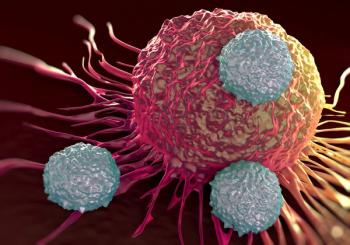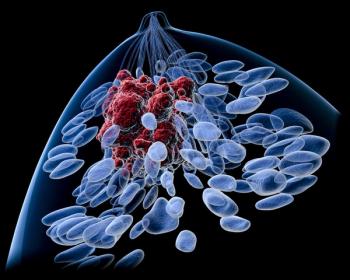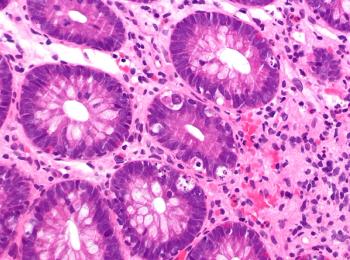
Oncology NEWS International
- Oncology NEWS International Vol 11 No 10
- Volume 11
- Issue 10
FDG-PET Predicts Prognosis in Primary Osteosarcoma
LOS ANGELES-A retrospective study indicates that 18F-fluorodeoxyglu-cose (FDG)-PET may be a good tool for predicting osteosarcoma patients’ response to chemotherapy, said Christiane Franzius, MD, and colleagues from the Department of Nuclear Medicine, University of Munster, Germany.
LOS ANGELESA retrospective study indicates that 18F-fluorodeoxyglu-cose (FDG)-PET may be a good tool for predicting osteosarcoma patients’ response to chemotherapy, said Christiane Franzius, MD, and colleagues from the Department of Nuclear Medicine, University of Munster, Germany.
Dr. Franzius presented the results at the 49th Annual Meeting of the Society of Nuclear Medicine (abstract 128).
In the study, the researchers monitored FDG uptake in 29 patients with primary osteosarcoma (ages 5 to 41) before treatment. FDG uptake was quantified as high or low using average and maximum tumor/nontumor ratios (T/NTav, T/NTmax). The patients then received chemotherapy and underwent surgery of their primary tumor site.
At a median of 28 months after treatment (range, 7 to 72 months), the patients with higher initial FDG uptake in their tumor had a poorer response to treatment, measured histologically, and a poorer prognosis.
During follow-up, nine patients relapsed and six died of the disease. Both overall and event-free survival were significantly better in patients with low FDG T/NTmax values (less than the median) than in those with high FDG T/NTmax values (greater than or equal to the median).
"The prognosis for a patient with osteosarcoma is always dependent on the therapy they undergo," Dr. Franzius said. "PET identifies patients at first diagnosis of the disease who may have a poor prognosis with the therapy usually prescribed. These patients can then be treated more aggressively. In additional studies, we hope to determine whether such therapy intensification actually improves outcomes for patients identified at diagnosis with high FDG uptake on PET."
In an interview with ONI, Dr. Franzius said that the researchers plan to study a large group of patients with osteosarcoma prospectively to confirm the results of the current study.
"Furthermore," Dr. Franzius said, "we will study a group of patients with Ewing’s sarcoma to evaluate whether the initial FDG uptake has the same prognostic impact in this tumor entity as shown in osteosarcoma."
Articles in this issue
about 23 years ago
Vaccine Turns Immune System Against Cancer Cellsabout 23 years ago
Three Themes to Guide von Eschenbach at NCIabout 23 years ago
Arimidex Approved for Early-Stage Breast Cancer in Postmenopausal Ptsabout 23 years ago
Long-Term Exposure to Diesel Exhaust Poses Lung Cancer Riskabout 23 years ago
Most Americans Unaware of Excessive Weight as a Risk for Some Cancersabout 23 years ago
Three Themes to Guide von Eschenbach as NCI Directorabout 23 years ago
Gleevec Gets FDA Priority Review for First-Line Use in Early CMLabout 23 years ago
New Anti-HIV Agent Prevents Virus From Entering Cellabout 23 years ago
Docetaxel/Gemcitabine Effective in Advanced NSCLCabout 23 years ago
Infusional FUFOX: Better PFS in Advanced Colorectal CancerNewsletter
Stay up to date on recent advances in the multidisciplinary approach to cancer.

















































































